DOJO
Dojo is the Japanese term referring to training hall/space for the practice of martial arts. The word “dojo” (道場) combines two characters: “do” (道), which means “way” or “path,” and “jo” (場), which means “place” or “location.” Together, they signify a place where individuals come to study and train in martial arts, not just for physical skill development but also for personal growth, discipline, focus, mutual respect and spiritual development. It is like a small society where different people gather to foster a sense of community, creating a supportive environment where individuals can learn from each other, challenge themselves and grow together in their martial arts journey.
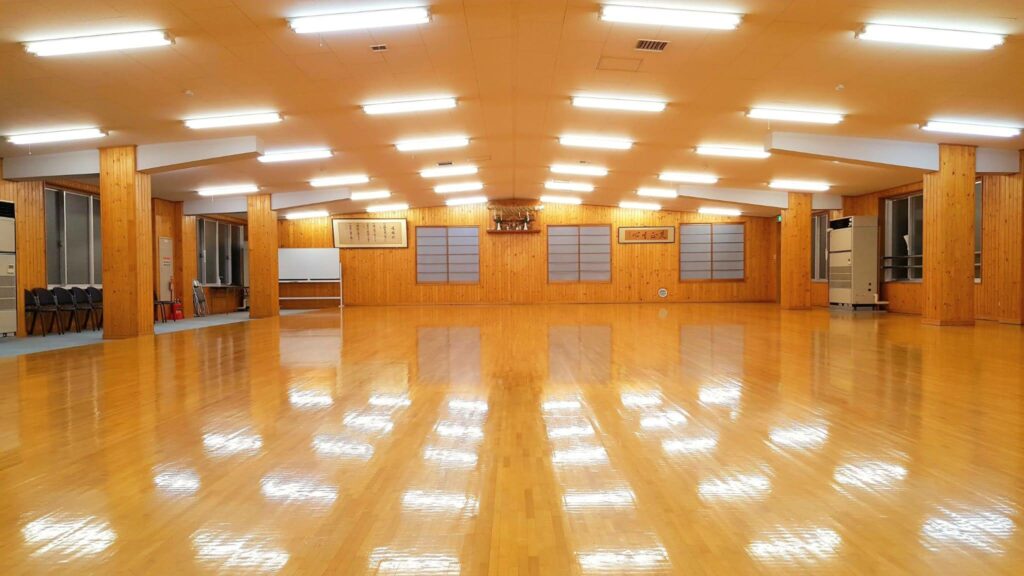
3rd Floor Dojo at JKA Headquarters, Tokyo
KARATE-GI / DOGI
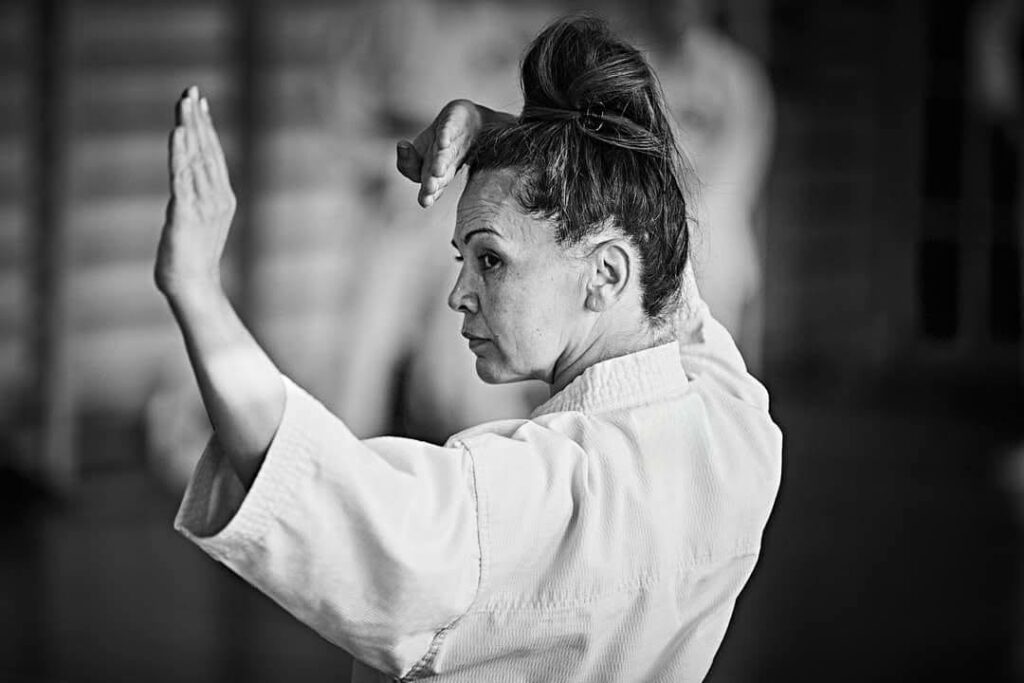
The tradition of wearing a white Karate-gi, as well as white dogi in other Budo disciplines like Judo and Aikido, carries significant symbolism deeply rooted in Japanese culture and martial arts philosophy.
“White is the symbolic color of Japan.
White is pureness(純 / Jun)
White is emptiness(無 / Mu) Mu of “Mushin”(無心)
White is holiness (神聖 / Shinsei)”
These are essential principles in the practice of martial arts. These values, represented by the color white, are meant to be embodied in one’s heart and soul (kokoro 心) during training in the dojo.
While Judo has adopted the use of blue judo-gi for competitive purposes, the introduction of colored uniforms was initially met with resistance from traditional Japanese martial arts institutions. However, the necessity of adapting to international competition standards eventually led to acceptance of the change. Despite modern trends towards uniform colors in competitions, there remains a strong contingent of practitioners who adhere to traditional Budo principles in their training.
[As explained by Keigo Shimizu Sensei, JKA, Dojo Yamato Dusseldorf Instructor, Germany]
TATAMI
In Japan, traditional Karate training often takes place on tatami mats or wooden floors. The choice of flooring can impact the training experience and reflects the historical and cultural context of Karate practice.
Tatami mats, made of woven rush grass over a straw base, provide a soft yet firm surface for training (nowadays also commonly made of synthetic material). The texture of tatami mats offers stability and grip, allowing practitioners to execute techniques with precision while minimizing the risk of slipping or injury. Additionally, training on tatami mats imbues a sense of tradition and respect for Japanese culture, as tatami has been used for centuries in Japanese homes and martial arts dojos alike.
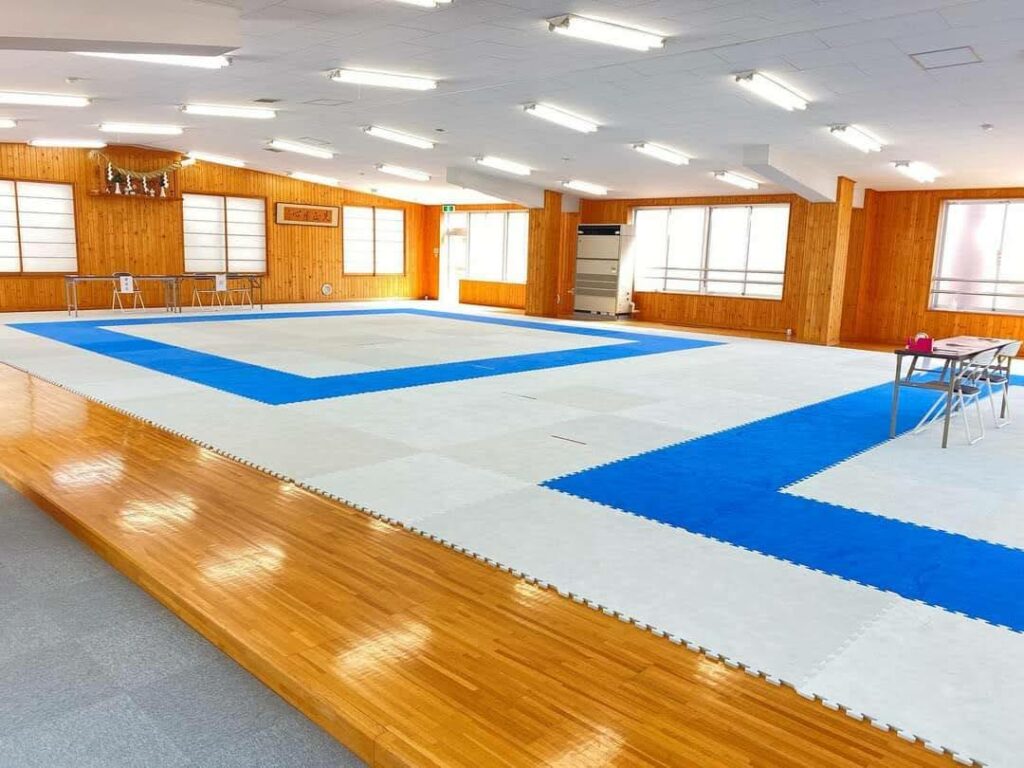
Photo courtesy of https://www.facebook.com/news.jka [Tatami at at JKA Headquarters, Tokyo]
On the other hand, some dojos feature wooden floors, which provide a different training experience. Wooden floors offer a firmer surface compared to tatami mats, allowing practitioners to focus on lower body power generation, footwork, stances, and balance with greater intensity.
KAMIDANA
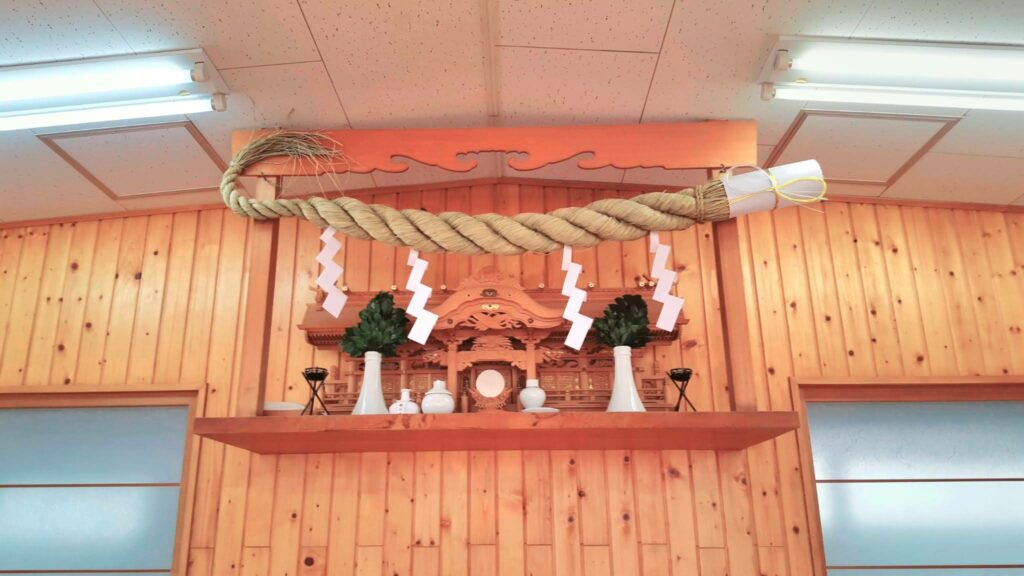
Kamidana at JKA Headquarters, Tokyo
In most Japanese Dojos, one is greeted by a Kamidana, reflecting Japan’s spiritual and cultural heritage. This small wooden shelf, elevated within the dojo, is adorned with symbolic elements like the Shimenawa—a rice straw rope denoting purity—and the Shintai, which may include mirrors, swords, or deity symbols. Offerings of food and water are also placed to show respect to the Kami (spirits or gods).
Practitioners usually bow towards the Kamidana at the beginning and end of training as a sign of respect and acknowledgement of the dojo’s guiding principles – discipline, humility and self-improvement – fostering a sense of unity and respect among practitioners.
In non-Japanese dojos, a Kamidana may sometimes be present purely for decorative purposes, preserving the traditional ambiance of the space. However, in most dojos a Kamidana is absent and a photo of Gichin Funakoshi or other esteemed Senseis may be displayed as a sign of respect and remembrance.
NAFUDA KAKE
Nafuda Kake is a Name plate board which usually displays names of students and instructors of the particular dojo and their ranks to create a sense of identity, community and hierarchy within the dojo. The use of nafuda kake is deeply rooted in the tradition of Japanese martial arts, serving as a visual representation of the dojo’s lineage and history. Having their names displayed is also a sign of respect for members’ dedication and achievements in Karate training.
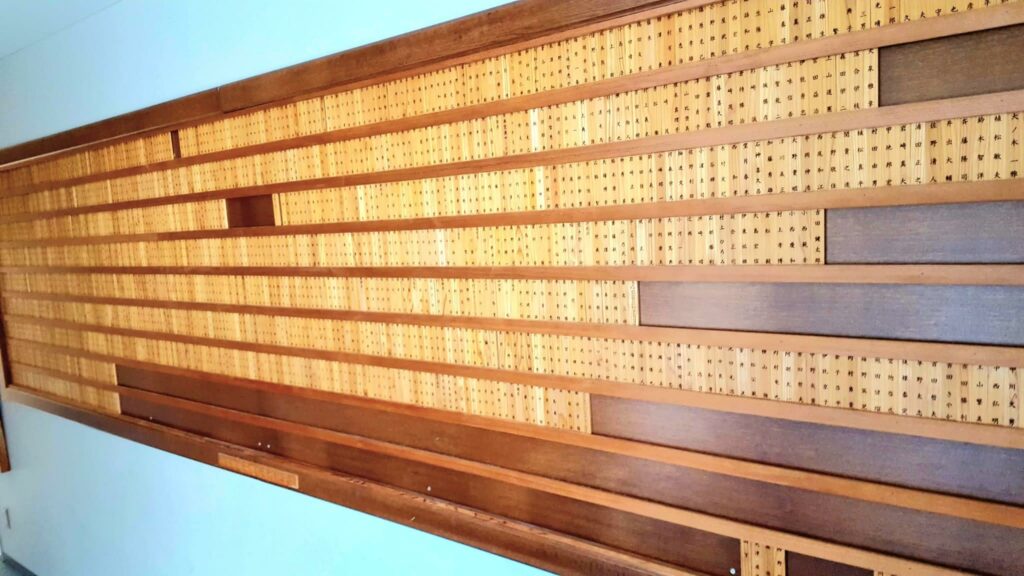
Nafuda Kake at JKA Headquarters, Tokyo
MAKIWARA
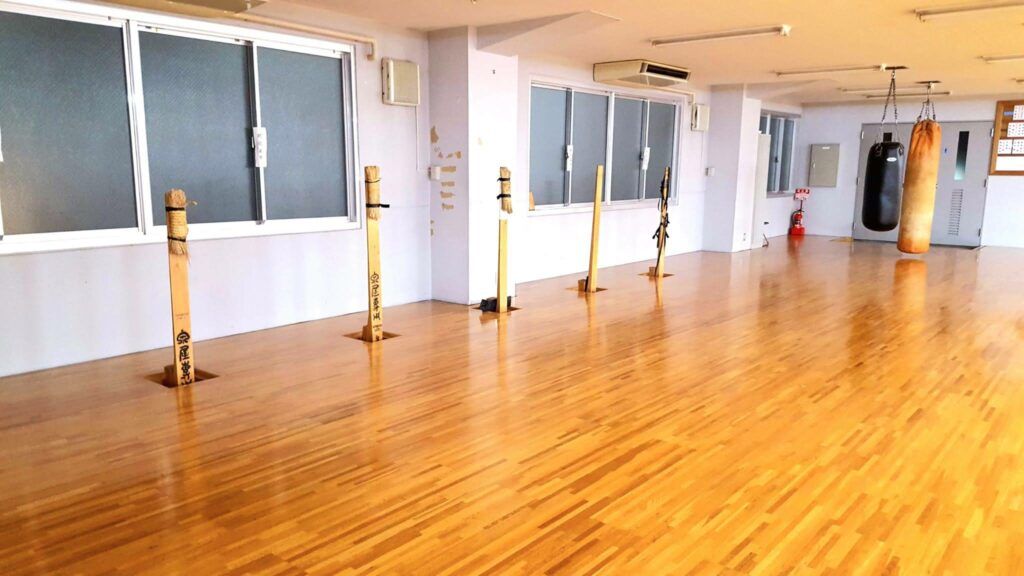
Makiwara at 2nd Floor Dojo JKA Headquarters, Tokyo
“Karateka of old were able to practice kime daily and in dead seriousness by using the makiwara” Best Karate, Kumite 1, M.Nakayama
The use of the makiwara is deeply rooted in the history and tradition of Okinawan and Japanese Karate, being a symbol of discipline, perseverance and dedication to training. It is a traditional training tool used to develop striking power, accuracy and conditioning, toughening the hands, fists, elbows and feet to gradually withstand impact and reduce risk of injury in sparring or self-defence situations.
It usually consists of a solid base anchored to the ground, a tapering wooden board and a padded striking surface that is traditionally made of wrapped straw. Canvas or leather are also commonly used. By repeatedly striking the Makiwara, practitioners not only develop proper form, alignment and technique but also help to develop focus, concentration, and mindfulness enhancing mental discipline and awareness; and ultimately mastery of Kime.
A guide to construction of a proper Makiwara can be found in the JKA Instructor’s Manual. https://www.jka.or.jp/en/download-JKA-manual/
KARATE UNIVERSITIES IN JAPAN
In Japan, universities with martial arts clubs, particularly Karate clubs, are renowned not only for their academic excellence but also for their outstanding performance in Karate competitions at various levels. These clubs uphold strict training regimens that often last for hours, pushing students to their physical and mental limits under the guidance of exceptional instructors.
Each University Karate club has its own unique teaching methods and training philosophy, honed over years of tradition and experience. These methods are designed to develop not only technical proficiency but also mental fortitude, discipline, and character.
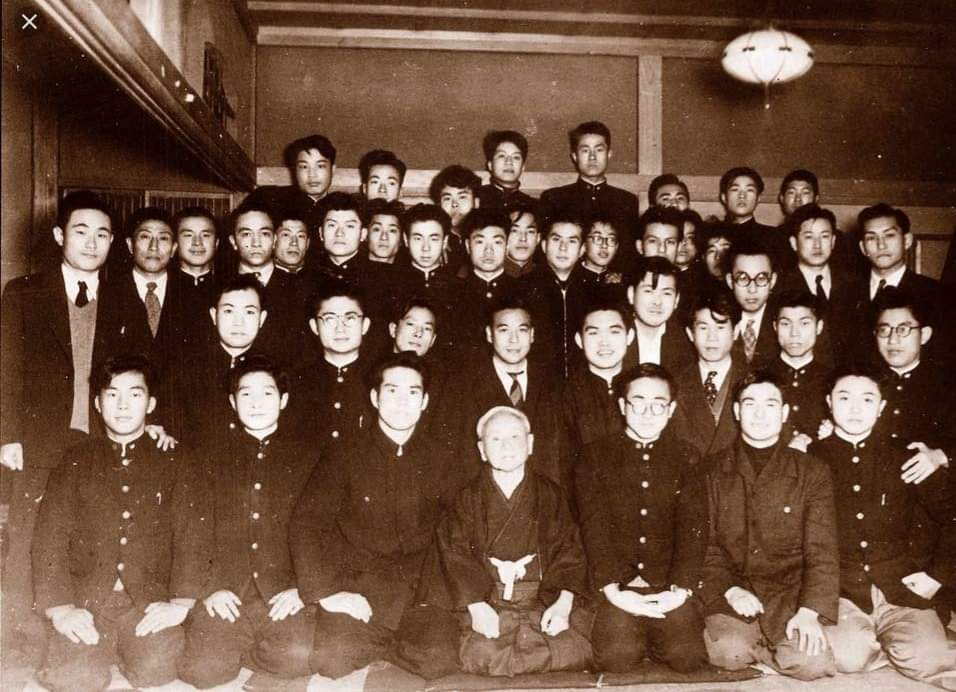
Funakoshi Sensei with his students at Waseda University
https://www.facebook.com/internationalkarateinstitute
Participation in regional, prefectural, and national competitions, including the prestigious All Japan JKA Championship, is a source of great pride and unity for members of these clubs. Representing their university on the national stage creates a strong sense of camaraderie and solidarity among team members, who train tirelessly to represent and honor their alma mater.
Some well-known University karate clubs in Japan, each with their own rich history and tradition, include Komazawa University, Takushoku University, Taisho University, Kinki University and Asia University. These clubs not only produce top-level competitors but also instill in their members the core values of Karate, such as respect, humility, perseverance, and self-discipline.
https://youtu.be/Dv2iZifR6HU?si=FN2JtOot9JnKNLE8
Beyond graduation, the bonds formed through shared experiences in university Karate clubs endure, creating a strong network of alumni who continue to support and inspire each other. Many former club members go on to become well-known instructors within the JKA, passing on their knowledge and passion for Karate to future generations of practitioners.
